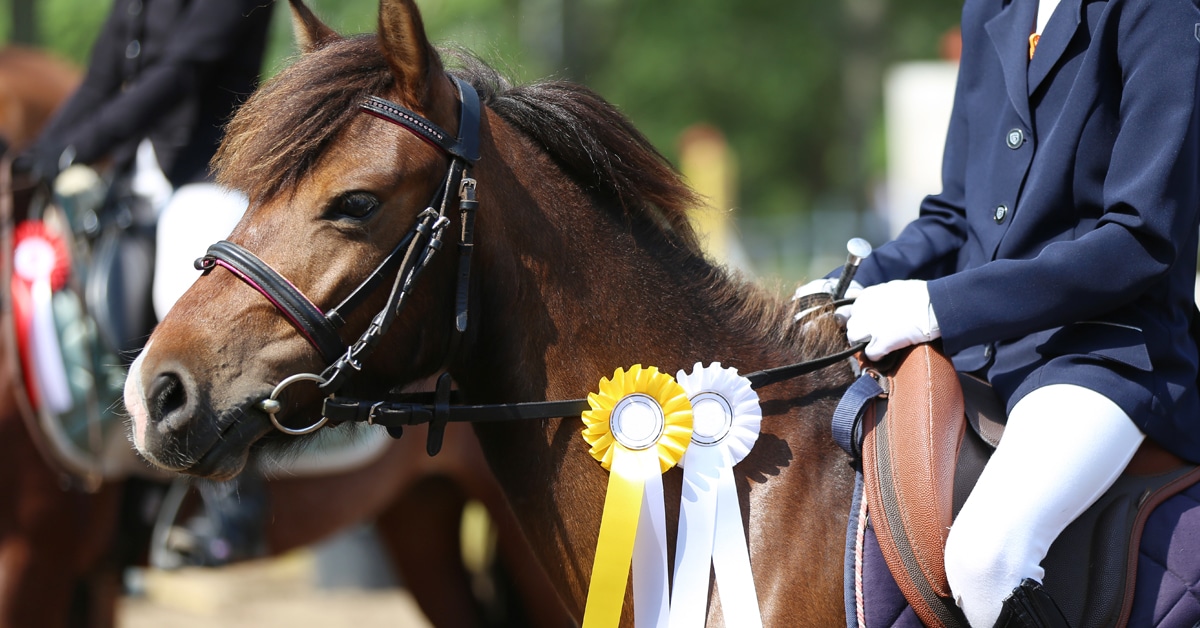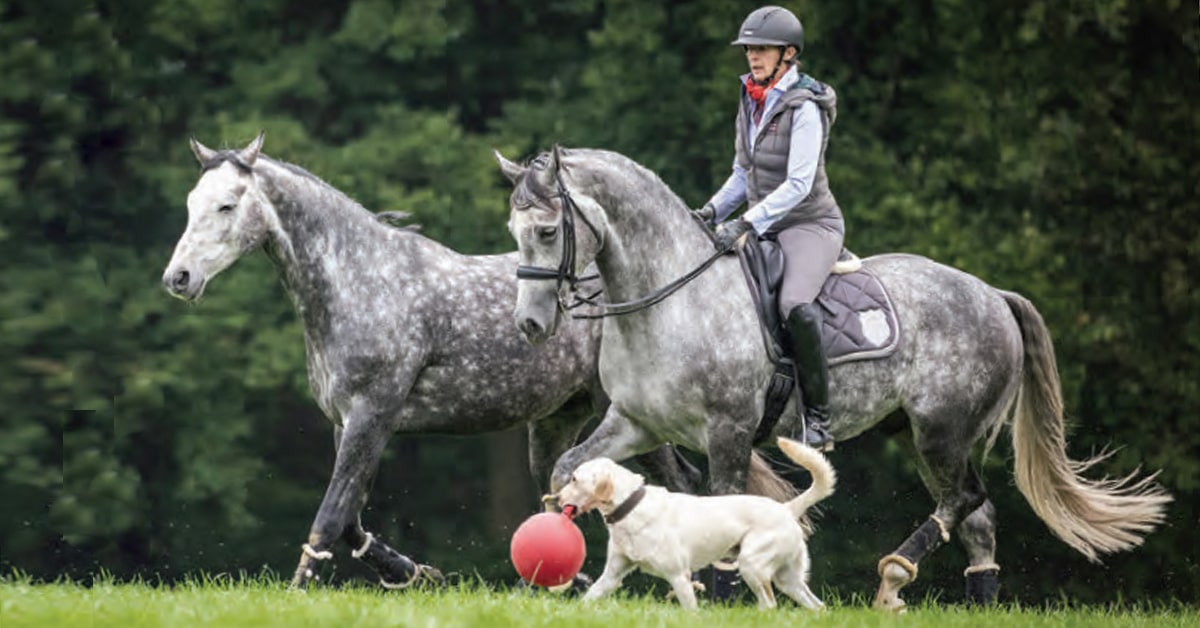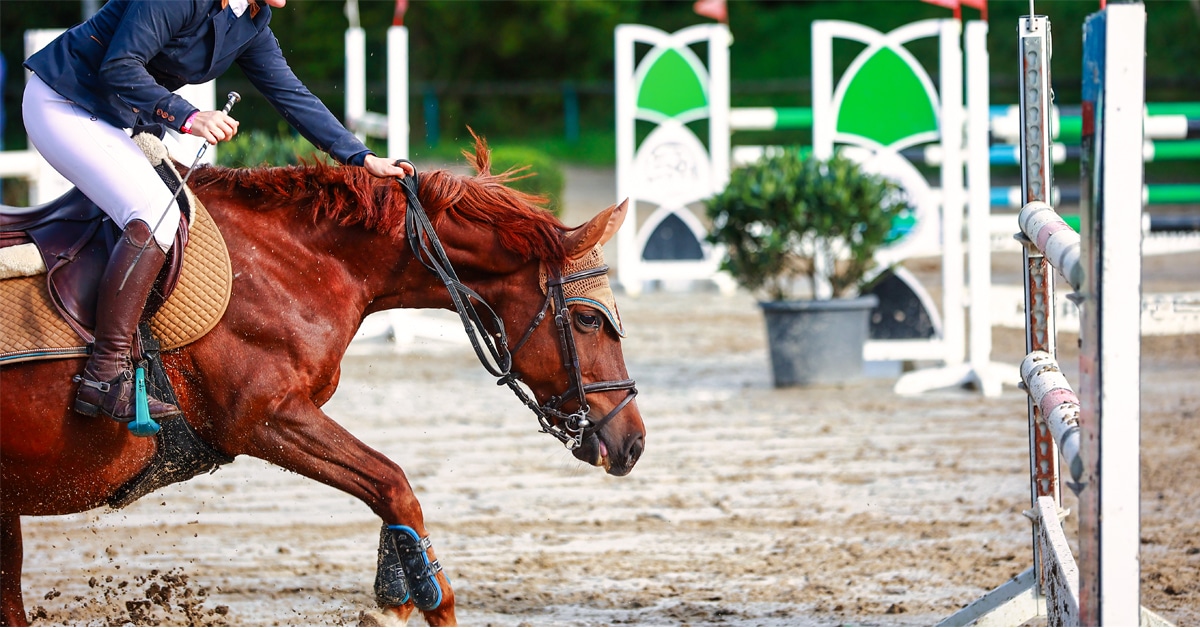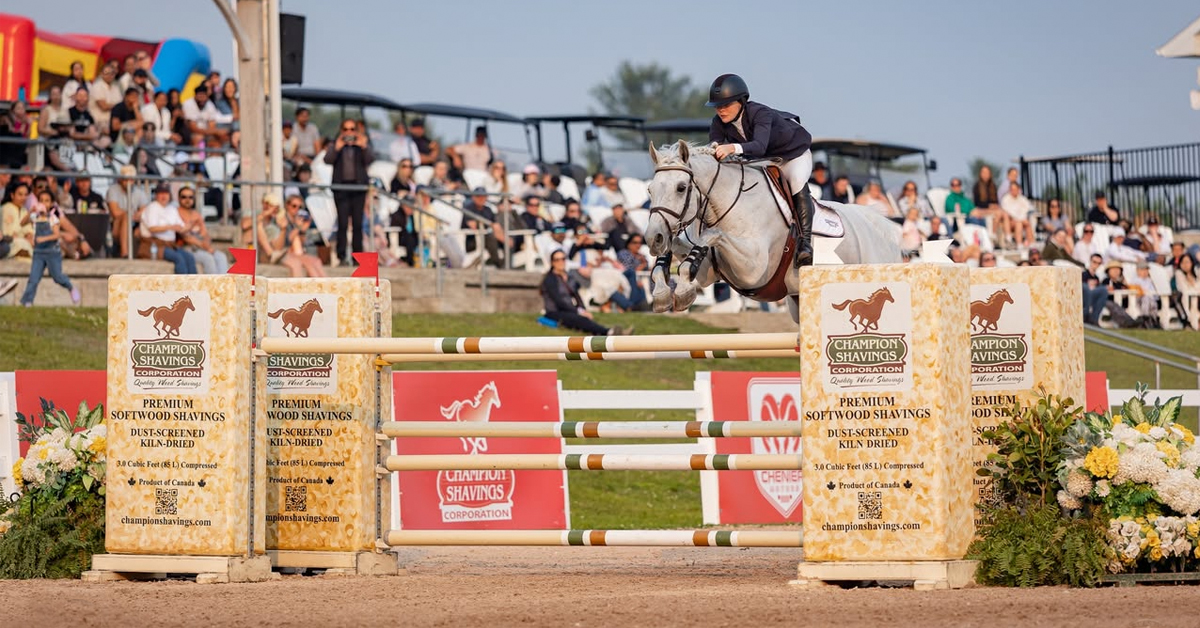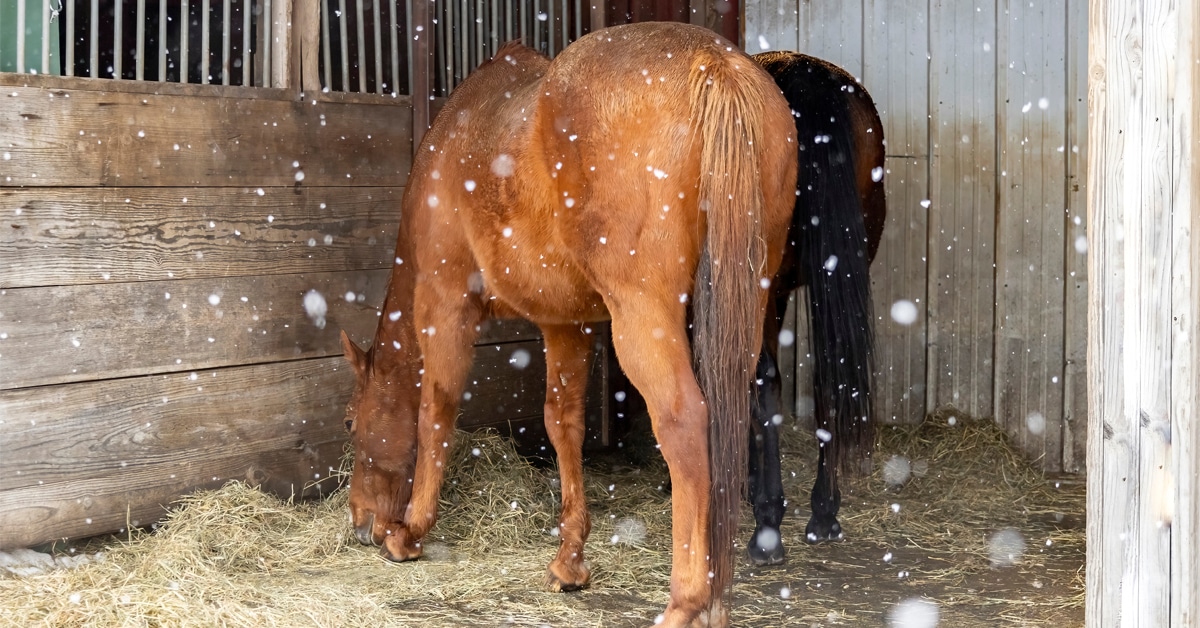“A twitch, just like sedation with a pharmacologic agent, takes time to work ‒ and just like chemical sedation, it wears off.” ~ Dr. Sue McDonnell, 2010
Ideally, it would be better if we did not have to use physical restraints on horses – ever. I’ve written other articles about how we can train our horses through both positive and negative reinforcement, not punishment, to willingly accept routine procedures that are a part of the sport horse’s life – standing quietly for the farrier, calmly accepting an injection, being clipped, having sheaths cleaned, remaining motionless for radiographs, etc. With minimal training beforehand (you would be astounded how quickly horses learn to work for treats!) physical restraints can mostly be avoided – at least for the procedures we can predict (see “Related Resources” at the end of this article for more on the “how to” of positive and negative reinforcement training).
Still, s#*t happens and there will be occasions where an invasive procedure is required and a physical restraint is necessary. Here I will take a look at the twitch, broadly (and unjustly) maligned as an instrument of torture.
The lip twitch: How it works, how to use it
The lip twitch works in three ways: it gives the handler better control of the horse than a halter, it is mildly painful when first applied, distracting the horse from the task at hand, and within a few minutes of application releases natural endorphins which act as an analgesic or pain killer. It is the last that makes the twitch an effective and humane restraint for short term, necessary, and aversive procedures.
Equine scientist and founding head of the Equine Behavior Program at the University of Pennsylvania School of Veterinary Medicine, Dr. Sue McDonnell, advises allowing approximately 3 to 5 minutes for the twitch to become effective. Handlers should look for a glassy eye, droopy lip, and relaxed expression before carrying on with the procedure. It is equally important to monitor the horse’s behaviour to know when your twitch window is running out and to remove the twitch well before the analgesic effect wears off . If the procedure is not finished, she advises to give the horse a break for 15 minutes and reapply the twitch; the analgesic properties will take effect again on the second application, although your window may be slightly shorter.
McDonnell notes that we need to think of administering a twitch just as one would a sedative. You would obviously wait for the sedative to take effect before embarking on a painful or invasive procedure and would never continue the procedure after the sedative has worn off.
Carmie Heleski and her research group from the University of Kentucky found that physiological measures of stress (heart rate and heart-rate variability) as well as behavioural responses indicated that naïve horses (those who had never been twitched) having their ears clipped for the first time without a twitch experienced much higher levels of stress than naïve horses undergoing the same procedure with a lip twitch applied.
Furthermore, when horses who were untwitched for the first ear-clipping went through the same procedure twitched, their stress response was significantly lowered. Also, twitched horses, unlike untwitched horses, willingly accepted the twitch application on their second exposure, suggesting that twitched horses were responding to the analgesic properties of twitching and did not find the experience painful or aversive.
The authors note that these findings “support previous work that twitching resembles classical acupuncture and appears to subdue the fear/stress responses elicited by a potentially aversive situation.”
If the twitch is so benign, why does my horse hate it so much?
Horses become twitch-aversive because we have trained them to be so. Commonly, the twitch is used without allowing sufficient time for the analgesic to take effect. It is hurriedly applied, the procedure performed, and the twitch taken off (or worse, the horse manages to shake it off) all before the animal can benefit from the positive endorphin effect of the analgesic.
Alternatively, the twitch is left on too long when the analgesic has worn off. When the body’s endorphins are depleted, typically falling below baseline, the horse will now feel the pain of the procedure, while having access to less of the body’s natural analgesic to deal with it. At this point horses enter the “blow phase” where explosive and dangerous behaviour is typical (McDonnell, 2004).Thus, the horse’s last memory of being twitched is of experiencing pain (from the twitch, the procedure in progress, or both), and associates this pain with the handler, the veterinarian, the procedure, and the twitch.
As the horse develops an aversion to being twitched, their escalating evasive behaviours are invariably reinforced by repeatedly and unsuccessfully trying to apply the twitch, thereby creating a strong reinforcement history that raising their head, rearing, walking over the handler, or any number of dangerous behaviours makes the dreaded twitch go away.
McDonnell remarks that “if you abide by the simple rules of applying it respectfully … wait until it has observable sedating effects … and then taking it off before the effect wears off so that the patient is left with that high feeling associated with the twitch, horses almost never build an aversion to it.”
To rehabilitate a twitch-aversive horse and break this avoidance cycle, McDonnell notes that although applying the twitch successfully initially may take some skill, a few training sessions using the twitch correctly will turn most horses around to accepting it without holding a grudge. “The horse has been taught by us to hate the twitch and has been reinforced for escaping it; don’t attribute undesirable complex motives to him,” remarked McDonnell.
Lip twitch vs. ear twitch
In a study comparing physiological measures of stress between ear and lip twitches on naïve horses, U.S researchers Benjamin Flakoll and associates found in 2017 that although both lip and ear twitches were effective in controlling horses for invasive procedures, they did so in very different ways. The lip twitch triggers parasympathetic nervous system activity (the message to the body that all is chill), whereas the ear twitch triggers the sympathetic nervous system (all systems alert, get the hell out of Dodge).
Salivary cortisol level comparisons also suggest that the lip twitch is not stressful for horses; levels remained constant from before twitching to after the twitch was applied. In contrast, in ear-twitched horses, salivary cortisol levels rose significantly when the ear twitch was applied. When the twitch was reapplied, four weeks later, the lip twitched horses willingly accepted being twitched, whereas most of the ear twitched horses became significantly more difficult to handle than they had been in their initial session. The authors conclude that while the lip twitch subdues horses through a calming and analgesic effect (though for a relatively brief window), the ear twitch does so through a stressful mechanism of fear and pain.
Treats rather than twitches
McDonnell notes that the students, owners, and trainers who work especially well with horses, and are the most likely to avoid injury while performing potentially risky procedures, are those who have limited or no prior horse experience, as they are more likely to be nonconfrontational and embrace positive reinforcement training over restraint. She notes that physical restraint tends to increase, rather than decrease the likelihood for an explosive horse. Although there will undoubtedly be occasions where twitching is necessary, McDonnell, along with most equine scientists advocate for training and treats over physical restraint wherever possible. Even with a learn as you go skill level, and a surprisingly modest time investment, almost all owners can train their horses to be the patient patient that veterinarians and farriers love to visit.
Teaching the “Freeze”
My favourite “Freeze” command has numerous applications in veterinary procedures. Catch your horse being still for one second, mark the behaviour with the sound of a clicker (or a word that the horse has learned is associated with good things to follow, such as “YES”), and then immediately reward the behaviour with a treat. Gradually increase the time that you want the horse to be motionless, mark it with your click or “YES” word, and reward.
Once the horse has the idea of what you are looking for you can give the behaviour a name or a hand signal. I use the word “Freeze” but it could be “Donald Duck” as long as you are consistent. Now I can give the freeze command and my horse knows to stay absolutely motionless for up to approximately 30 seconds which is sufficient for most veterinary imaging procedures.
The “Freeze” command is different than simply “being calm” in that in the former I expect absolute immobilization. Thus, it needs to be for a short duration, and during a non-invasive procedure such as taking an image. It would be unfair to ask my horse to “Freeze” and then follow this with a procedure that would make it difficult for her to be absolutely still.
Related Resources:
Dr. Gemma Peterson (Equine behavioural specialist, International Society of Equitation Science Council, and head of University of Edinborough’s Equine Behaviour Service, has created an accessible and engaging 5-minute video series, entitled “Don’t break your vet” which covers a range of topics for owners to teach(or rehabilitate) their horse to tolerate common mildly aversive veterinary procedures.
Shawna Karrash, an expert in equine positive reinforcement training, uses blogs, podcasts, Ask Shawna videos, online coaching, and clinics at her home base Terra Nova Training Center in New Mexico to teach your horse almost anything.
Previous AJZ Henderson articles on positive and negative reinforcement training:
The Positives of Negative Reinforcement
Positive Reinforcement: Where Does it Fit in Equine Training?
Positive Reinforcement Training: Adding up the Pluses and the Minuses
Shaping: Learning in Baby Steps
The Latest
